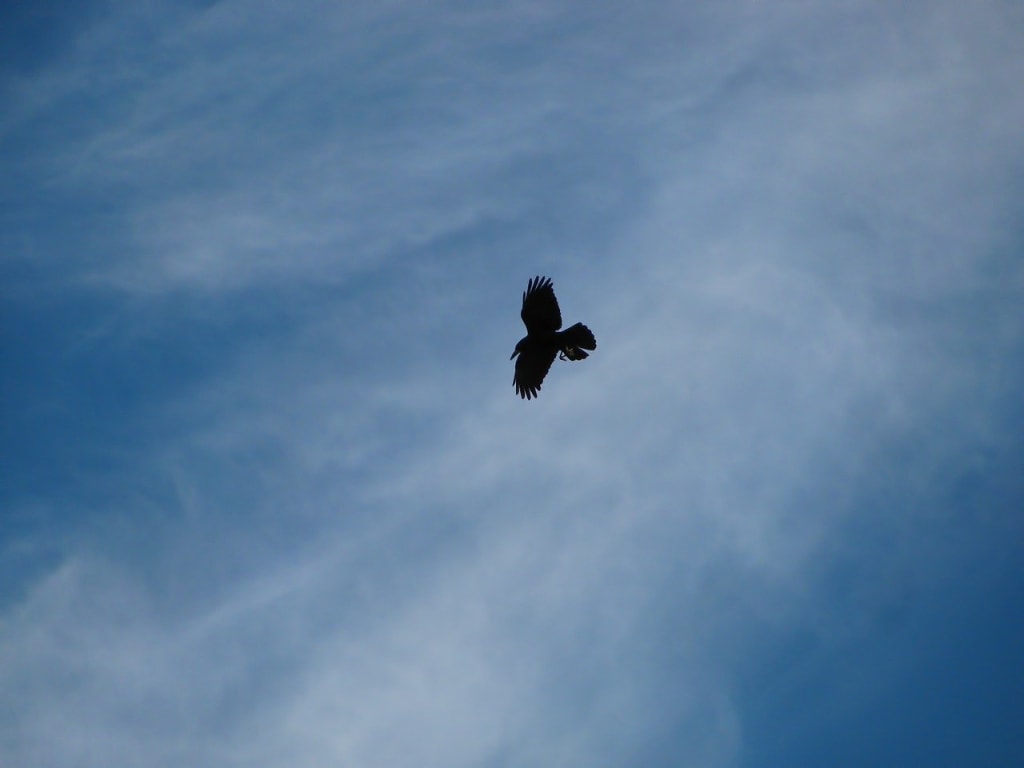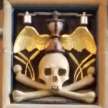
A murder of crows. An unkindness of ravens. Corvids (from the family Corvidae) are frequently associated with misfortune, as you can see from their group names. However, in some mythologies, they are instead associated with wisdom, as seen with Odin's twin ravens, Huginn and Muninn, in Norse mythology. Many Native American tribes viewed the crow as a symbol of wisdom or transformation.
Indeed, corvids have shown considerable intelligence in studies. They have large brains relative to other birds, and they appear to put them to good use. In both research studies and in the wild, crows have shown the ability to create and use tools to obtain food or protect their territory. One particular breed of crow, the New Caledonian crow, has even shown the ability to create compound tools, that is, to use nonfunctional individual parts to create a tool to accomplish a task. Crows also understand water displacement; in studies, they were able to use pebbles to raise the water level in a tube and access a piece of meat floating on the water.
Corvids also recognize and remember human faces, and for significant amounts of time. In one study, crows recalled and responded with hostility to faces associated with a stressful event for up to 5 years. What's more, they taught other crows to respond to those same faces with hostility as well. There's also the Internet-famous case of the young girl who feeds crows. They bring her gifts periodically. They also managed to associate the girl's mother with the girl and returned a camera lens cap to the family after the girl's mother lost it.
There's even some evidence that corvids may have self-awareness. The mirror test, where a colored mark is placed in an area that can only be seen using a mirror, is used to test for self-awareness. If the animal notices the mark and then attempts to interact with the same spot on their body, they're deemed to be self-aware. So far, two magpies and four Indian house crows have managed to pass the test, although there have also been several studies where crows failed the test.
Speaking of magpies, these beautiful white and black birds are indeed corvids. Most people know them for their supposed thievery and predilection for shiny objects, but this myth is actually based on a French play from the 1800s. In reality, magpies tested in studies show no preference for shiny objects.
Other common myths related to corvids include the famous ravens of the Tower of London. These captive ravens are said to protect Britain and the Crown. Superstition says the country will fall if the ravens ever leave the Tower.
There's also the matter of the famous poem about counting crows (memorialized by the band Counting Crows in their song, "A Murder of One"). The original version actually references magpies, considered to be an omen of bad luck in Europe, but versions of the poem exist referencing crows and ravens as well. One of the oldest versions known to exist dates to 1780 and stops after reaching the number four, "One for sorrow, / Two for mirth, / Three for a funeral / And four for birth."
The family Corvidae also contains some surprising members. Many people don't realize that jays, jackdaws, and nutcrackers belong to the same family as ravens and crows. In particular, jays have been noted to display tool use just as their corvine cousins do.
The lesson here is clear: corvids are far from "bird brains." So, the next time you consider chasing one off in aggravation, think again; that bird will remember your face and warn his friends, and you'll be in for a world of trouble for years to come. On the other hand, treat them kindly, and maybe you'll be lucky enough to collect some gifts yourself.
About the Creator
Catsidhe
Pronounced Cat-she: https://en.wikipedia.org/wiki/Cat-s%C3%ACth
A public figure writing privately
Dark poems and fiction my specialty
Come explore the abyss with me






Comments
There are no comments for this story
Be the first to respond and start the conversation.